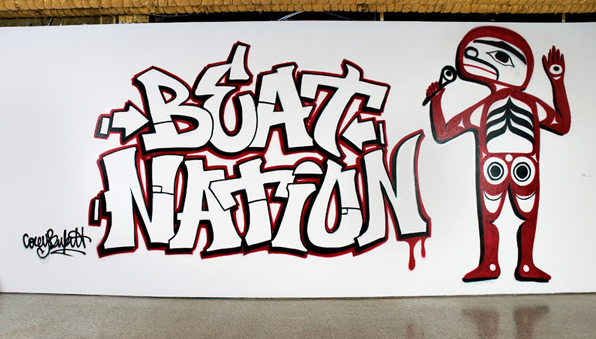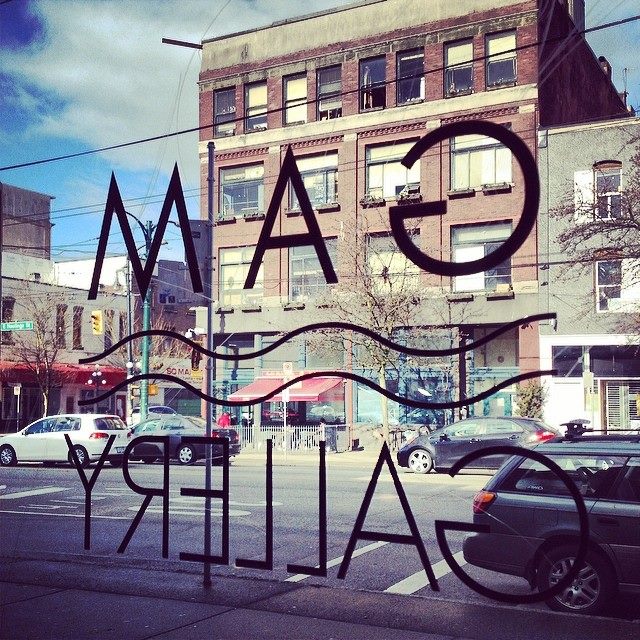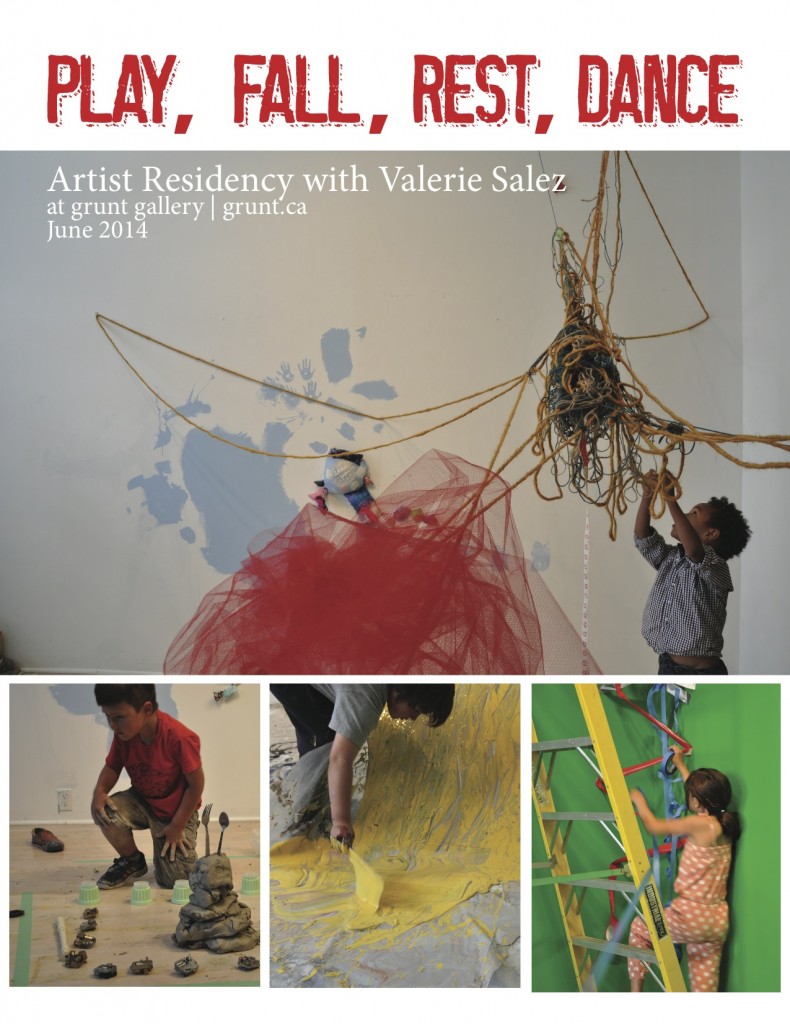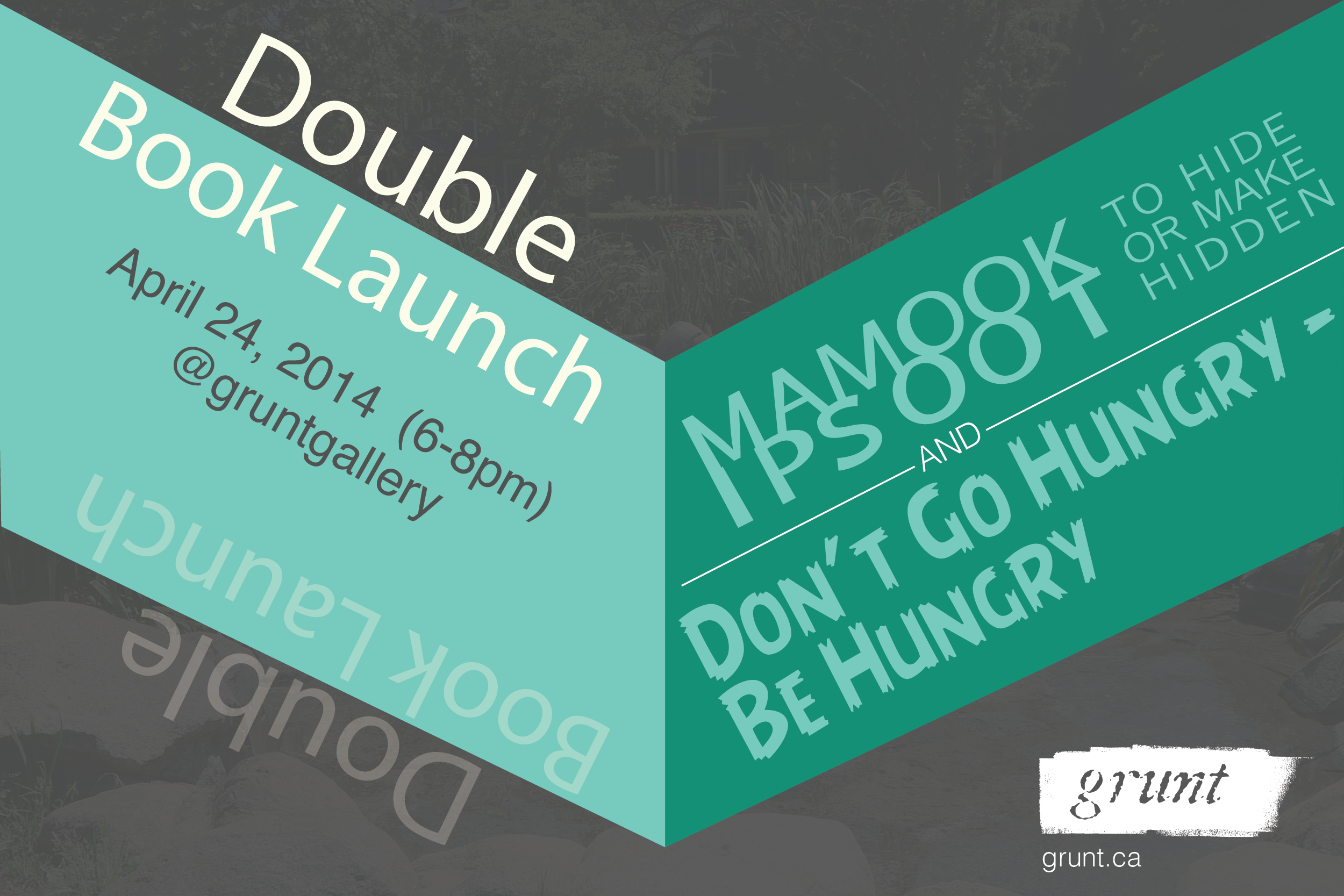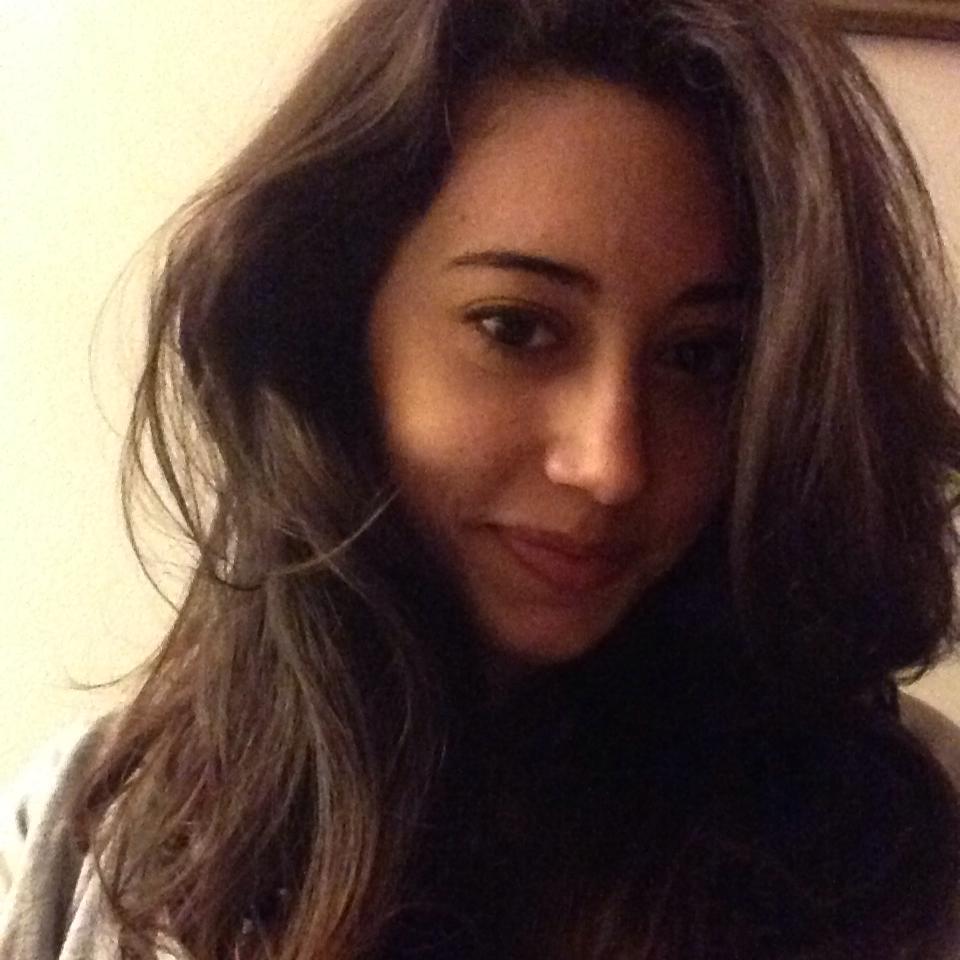Written by Anastasia Scherders
Valerie Salez’ installation project Play, Fall, Rest, Dance, exhibited at grunt from June 2 to July 5, 2014. Over the course of one month, the gallery space was continuously transformed. You could anticipate that, in visiting grunt, you’d witness Salez’ effort to facilitate art-making that was full of possibilities, and you’d get a glimpse of the experience of artistic exploration and uninhibited creativity of four children with disabilities: Amelie, Deshik, Henry and Isabelle.
Upon meeting Salez, the first thing she told me about Play was there are no rules. This is one of the philosophies that underscored the project; and with those words I was encouraged to let go of my own assumptions surrounding art and art making, and the limitations that we often impose upon creative expression and creator. With Play, she facilitated a kind of freedom in art making, providing the materials, tools, and guidance for children to create within a safe and accessible space.
Salez invited me to sit in on an art-making session with 12-year old Henry, who is autistic. The three of us sat cross-legged on the floor, surrounding a large piece of particleboard where pieces of chalk, charcoal, and a hammer and glue gun lay. Henry, who loves working with the hammer, had broken some of the chalk into fine powder. Valerie pushed the powder around with her fingers, smudging it onto grey cardboard while Henry carved small details into a piece of yellow chalk with a razor blade. “Like any good artist, he will try anything,” says Salez.

Photo by Valerie Salez
Scattered next to me was a collection of Henry’s drawings that he brought from home – highly detailed pencil-drawn characters crowded each page. Salez explained to me that Henry, whose bold and energetic painting dominated the gallery wall behind us, draws all the time. The white wall seems almost limitless compared to the confining boundaries of a piece of paper. Through Play, Henry has experimented with new forms of artistic expression.
Elisha Burrows, grunt’s Exhibition Manager who was video recording this session with Henry, asked Salez if the art world is pretentious. “It can be,” replied Salez. “It can be a world of criticizing and classifying; I don’t like to see my work in those ways. I want my work to be accessible.”
Play, Fall, Rest, Dance followed Salez’ residency at Open Space Gallery last summer where she worked with children for the first time. “Open Space invited me to do whatever I wanted. At that moment, I wanted to have fun and create art with children without intellectualizing or conceptualizing it,” said Salez. “Kids go to art galleries, see the work of adults, but aren’t allowed to touch anything. Now, they are the artists, able to touch everything.”
And no two sessions were alike. Some days they’d listen to music or spend most of their time talking. Some days they wouldn’t talk at all. Some days the kids got stuck. Salez felt the biggest challenge came from the children’s inhibitions, which she deeply empathizes with. Since childhood, Salez has suffered from severe, sometimes life-threatening, depression and is familiar with the debilitating feeling that comes from a lack of self-esteem and confidence. “It has really been a mirror for me. I am observing them and observing myself – my insecurities and fears, and theirs,” she says.
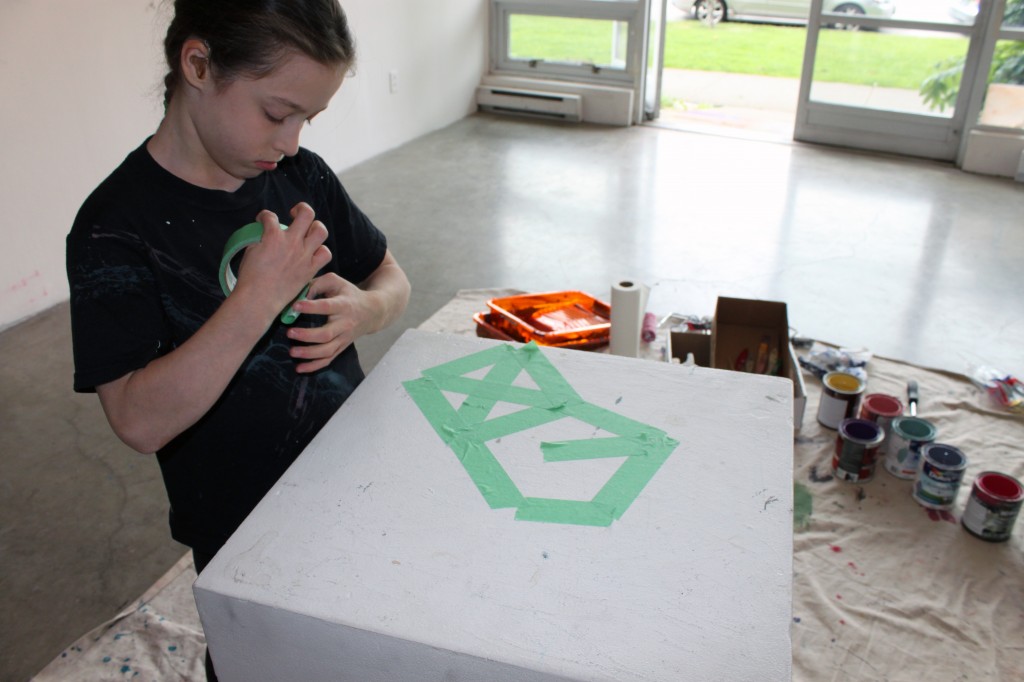
Photo by Valerie Salez
Throughout the process, Salez talked to the children about failure and would ask them what is the worst that can happen if we fail? “Kids need freedom, but it is hard for children to feel free. They are so worried about making mistakes, about doing right or wrong. They don’t feel comfortable making decisions. I want to empower them to make decisions, I want the kids to feel confident and brave, but I don’t want to influence them too much. It’s a fine balance.”
Salez emphasizes that Play is about her and the children spending time with materials in a space. She spent four sessions with Amelie, Deshik, Henry and Isabelle, allowing time to develop a rapport and build trust to support an experience of teaching and learning, exploration and discovery. Salez feels they came to understand one another through constant learning and negotiation. “I had all sorts of assumptions,” she says. “They’ve all been blown out of the water.”
When asked about curating the space and removing some of the children’s work over the course of the exhibition, Salez says it felt natural and intuitive. “That’s my playtime. The kids are okay when I erase their work. They will just make something else.”
Once the art making part of Henry’s session was over, we worked together to clean up the materials and sweep the floor. While I pushed around a broom, Henry transformed his straw broom into a ninja’s baton, stopping it firmly in midair, then spinning it in every direction. Henry spun around the room in circles, too. Witnessing Henry’s re-imagining of this object, it seemed that the most striking quality of Salez’ work is the way in which it has nurtured beautiful and ephemeral moments of uninhibited imagination, creativity and play.
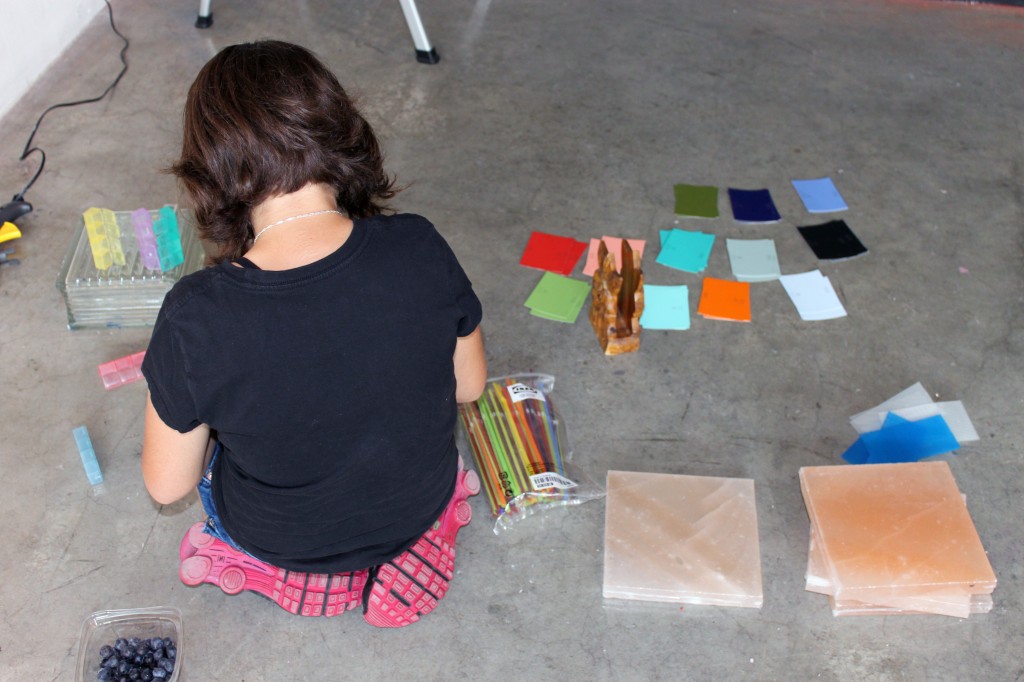
Photo by Henri Robideau
“The kids are okay with doing something for the sake of doing it,” says Salez. “They are okay to walk away with nothing except the experience.” Unlike the end of a school day, the kids of Play do not take home an object they have crafted. Instead, they take home the most challenging and delightful experience of having worked to create something.
About the Project:
Play, Fall, Rest, Dance occurred at grunt gallery from June 2–July. Artist Valerie Salez blogged the entire process. Read the exhibition press release here.
About the Writer:
Anastasia Scherders, who moved to Vancouver in 2012 from Brantford, Ontario, began volunteering at grunt gallery in November 2013. She holds a bachelor’s degree in English and Theatre & Film from McMaster University.


